Table of Contents
Classical Theory of Organization:
The Classical Theory of Organization is also called Administrative Theory. It came to be developed in the early part of the 20th century. Henry Fayol, a French manager and industrialist put forward the basic premises of the organization theory in his book “General and Industrial Management” (1916). It was followed by the publication of another important work “Onward Industry” written by James Mooney and Alan Ruby and published in 1918. Still, later in 1937, Papers on the Science of Administration, an edited work, was bought into print by Luther Gulick. All these works and several others played a big role in the development of the science of administration in the first half of the 20th century.
The general issues of Administrative Organization were first of all subjected to systematic theorizing by Henry Fayol. Later on, these theories were developed by Gulick and Urwick, and they formulated a set of universally recognized principles of organization. These formulations are collectively called the Classical Theory of Organization or simply the Administrative Theory.
It is called “classical” because it has been one of the earliest formulations based on a systematic analysis of an organization. It accepted the view that organization was the primary unit of analysis and design. The classical theories believed that a science of administration can be developed on the basis of several fundamental principles of organization as well as on the basis of the experience of administrations. The classical theorists played their part in getting accepted that administration which was being regarded as only art could be developed also as a science. In fact, such a transformation had a beginning under the influence of the ideas of Fayol, Gulick and Urwick.
However, classical theorists prefer to give more importance to the structure of the organization than to the role of the people in the organization. They always concentrate upon the study of organization in terms of its hierarchical structures and their functions. Urwick in his book “Elements of Administration” defined an organization as “determining what activities are necessary to any purpose and arranging them in groups which may be assigned to individuals”. He conceptualized an organization in terms of designing the administrative structure.
The Classical Administrative Theory is closely related to the Bureaucratic Theory of Organization. Both these theories are largely deductive and take a normative view of an organization. Both advocate formal organizations, both emphasize order, objectivity, rationality, certainly, hierarchy and professionalism.
According to Fayol, “Administration is a process that must be carried out at all levels of an organization and the main elements of administration are planning, organizing, commanding, coordination and controlling”. Gulick tried to improve this view of Fayol by advocating his POSDCORB view of administration. Each letter of this term was taken to mean a definite thing.
P- Planning- Working out the things that need to be done and the methods for doing them in such a way as can accomplish the purpose set for the enterprise.
O- Organization- Establishment of the formal structure of authority through which, work sub-divisions are arranged, defined and co-ordinated for the defined objectives.
S- Staffing- The whole personnel function of bringing in and training the staff and maintaining favourable conditions of work.
D- Directive- Continuous task of making decisions and embodying them in specific and general orders, and instructions, and serving as the leader of the enterprise.
CO- Co-ordinating- The all important duty of inter-relating the various parts of the work and making them get on in a coordinated way.
R- Reporting- Keeping the executive informed of what is going on, which include keeping him and his subordinates and himself informed through records, research and inspection.
B- Budgeting- All that goes with budgeting in the form of fiscal planning, accounting and financial control.
The Classical Theory of Administration revolves around such a view of the nature and scope of administrative organization.
Main Principles of the Classical Theory:
Urwick identified eight principles of classical or administrative theory. These are-
(1) The Principle of Objective- that all organisations should be an expression of a purpose.
(2) The Principle of Correspondence- that authority and responsibility must be co-equal.
(3) The Principle of Responsibility- that the responsibility of higher authorities for the work of subordinates is absolute.
(4) The Scalar Principle- that a pyramidical type of work structure is built up in every organization.
(5) The Principle of Span of Control- that each administrative officer is to exercise control over a defined number of subordinates.
(6) The Principle of Specialization-limiting one’s work to a single function.
(7) The Principle of Coordination- inter-relating of various parts of the organization.
(8) The Principle of Definition- clear prescription of every day.
Luther Gulick also lists the following as the Principles of Organization-
(1) Division of work or Specialization.
(2) Basis of Department Organization.
(3) Coordination through hierarchy.
(4) Deliberate Coordination.
(5) Coordination through Committees.
(6) Decentralization.
(7) Unity of Command.
(8) Staff and Line.
(9) Delegation.
(10) Span of Control.
Some of the important Principles of Organization can be explained as under-
(1) Work Divisions- The classical or administrative theorists hold the principle of work divisions as the central point of the theory. Work division is necessary because men differ in nature, capacity and skill. In the words of Luther Gulick, “Work division is the foundation of an organization. Administration carries out its works through several organizations like departments, corporations and regulatory commissions. Each organization is organized either on the basis of Purpose or Process or People or Place”. Luther Gulick suggests that there are four possible bases of organization. He refers to these as Four Ps. These are-
- The Purpose that the organization serves.
- The Process it uses.
- The Persons or things it deals with and works for.
- The Place for which it works.
Most organizations are based on purpose or function. However, some of the organizations are based upon other bases also.
(2) Coordination- Coordination is an essential feature of an organization. It refers to the inter-relation of various parts of the work divisions. Coordination is essential for uniting the efforts of various parts of the organizational structures and functions. Only a well-coordinated organization can be expected to deliver the desired goods or services in an effective and efficient manner. Coordination has to be secured through conscious and planned efforts. As Gulick observes, “Coordination is not something that develops by accident; rather it is won by intelligent, vigorous, persistent and organized efforts”.
Further, Gulick holds that coordination can be achieved in two ways-
(1) Coordination is achieved by orders from the top to the bottom.
(2) Coordination is achieved through the dominance of an idea i.e. development of intelligent singleness of purpose in the minds of those who are working together.
While providing for the securing of coordination, it must be accepted that coordination has to be approached with different emphasis in small and large organizations, in simple and complex situations, in stable and in new or changing organizations. These variables have to be kept in view while planning for securing coordination among the various parts of an organization. The nature of the organization has to be kept in mind while preparing for formulating the coordination plan and network.
(3) Unity of Command- Unity of command is another valid time-tested and uniformly accepted principle of administration. Each organization should have a unified command structure that should work under a single command of the administrator at the top. According to Gulick and Urwick, “Well managed administrative units in government are headed by single administrations”. Leadership is vested in one man. The principle of unity of command is opposed to the concept of a plural board or commission leadership of an organization. It is based upon the simple notion that no person can serve two masters. Unity of command keeps the organization responsible. It also helps the coordination of different parts of an organization.
(4) Line and Staff Divisions- Each organization is basically either a line or a staff organization. However, some organizations can be both line and staff or quasi-line and quasi-staff. In these, a successful and efficient meshing of line and staff function has to be made. Further, in each organization, staff and line functions have to be undertaken. The characterization of an organization into line or staff has to be done keeping in view the major functions being performed.
According to Gulick, “Staff experts have to devote their time exclusively to the knowing, thinking and planning functions. Public officials in their everyday life do not have time to read, think and meet their subordinates. Hence they need assistance in their central tasks of command, control and coordination. Such assistance is given by staff experts. Thus the “Staff” is to lessen the burden of the top executive”.
(5) Span of Control- Organization is manned and worked by human beings. Each human being has a limited span of attention. He cannot do all the work. He cannot control all the subordinates or even a large number of subordinates. In other words, he has a limited span of attention. That is why in every organization, each higher administrator is entrusted with the responsibility of supervising the work of a limited number, mostly five or six subordinates. As Urwick puts it, “No supervisor can supervise directly the work of more than five or at the most six subordinates whose work interlocks. The limits of control are determined by such factors as spn of attention, limits of knowledge, time and energy, different kinds of work, and size of the organization”.
Referring to the span of control of an administrator, Luther Gulick is of the view that the chief executive of an organization can deal with only a few immediate subordinates. The number stands determined not only by the nature of work but also by the capacity of the chief executive.
The Classical Theory of Organization or the Administrative Theory offers the set of these five fundamental principles of administration. It holds that Public Administration can be organized and operationalized effectively by following these principles. Moreover, the study of Public Administration involves the study of organizations or organized structures. This can be done on the basis of the study of these five fundamental principles of organization.
Between the 1930s and 1950s, the Classical Theory of Organization remained most popular and it had a big impact on the theory and practice of Public Administration. Several administrative reforms were carried through on the basis of the principles advocated by this theory. These served as important inputs for the recommendations made by several administrative reforms committees and commissions that were constituted by various states, more particularly by the United States of America. The Brownlow Committee Report (1937) and the Hoover Commission Report were also influenced by the views of the Classical Theorists of Public Administration.
Critical Evaluation of Classical Theory of Organization:
A general line of criticism against the Classical Theory has been that it never used the established scientific methods. Most of the principles of this theory are based on personal experiences and interpretations of its advocates.
Herbert G. Hicks and C. Roy Gullet observe “With the absence of a scientific basis, this theory is merely a set of proverbs comparable to folk-lore and folk-wisdom”.
Herbert Simon also lashes out at some of the principles of this theory, particularly its principles of division of function, unity of command and span of control. Referring to the four P’s, Simon asserts that division of responsibility and specialization can be on the basis of either function or process or objective or place. However, the Classical Theory fails to give any clue as to which basis is preferable in any particular case. Simon describes the “Principles of Administration”, as mere proverbs of administration.
Subra Mangam points out another limitation of the Classical Theory. He holds that it is a biased theory. It is biased in favour of the management aspect of an organization. It is concerned with the problems of management and not with other organizational problems that concern the other levels of organizations and men.
This theory has also been criticized due to its atomistic nature. It looks at individuals in isolation and not as integrated officials or fellowmen of the organization. It is mechanistic, static and rationalistic in approach. Because of this fact, it fails to explain the dynamics of organizational behaviour. It is more concerned with the work than human beings who carry out the work. The human being is considered as a mere cog in the organizational machine. In other words, it fails to give any importance to the human factor of an organization.
Conclusion- Though the classical ideas were expounded in the first two decades of the 20th century, classical management thinking is still dominant among many practizing administrators. It has made significant contributions to the development of organization theory. The classical theorists have attempted to discover the true bases on which division of work in organizations can be carried on. They also have endeavoured to find out an effective method of coordinating work for the sake of efficiency in the working and output of an organization.
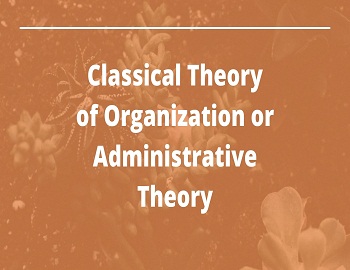
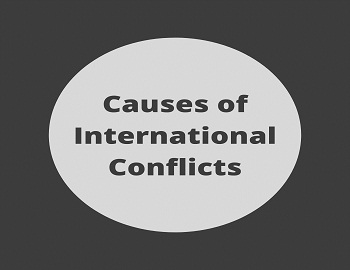
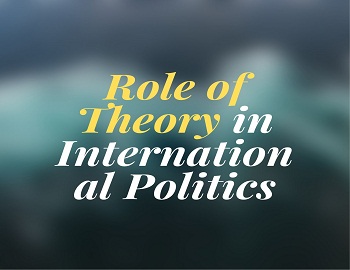

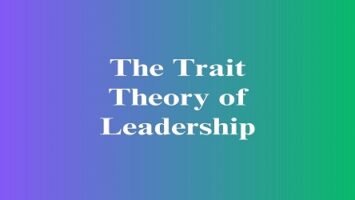
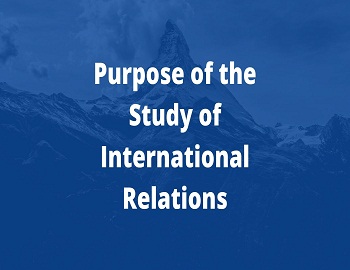



Comments (No)